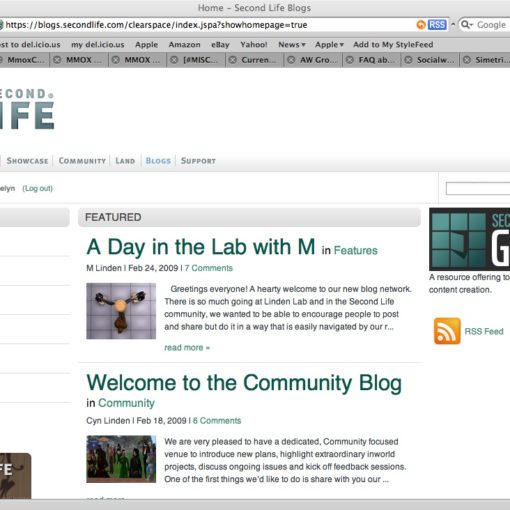Invent your own wheel: the fragmentation of the social networks
The result is fragmentation: instead of having this wonderful feeling of being connected to one huge community of 2 billion Internet users, one is actually connected to separate, individual websites, each with its set of things you can do in them, and each with a different set of ‘friends’. Some might argue that this model allows social networking sites to compete for people’s attention, and that the ‘best’ will win at some point, thus benefiting everybody that way — we just get the ‘best’. The truth, of course, is quite different: the more options you’ve got, the more fragmented it gets; Facebook’s success can be partially explained for filling a lot of roles at the same time, and thus allowing different kinds of people to use it in different ways. For some, it was just a “Twitter replacement”; for most, it’s just a way to share links; for a lot, it’s the largest free game distribution mechanism.
Contrast that with the way some things in the world work, where standardisation and protocols gave us an uniform way to share an environment without, however, constraining us in picking a specific company. Let’s move out of the Internet. In the real world, all cars have similar specifications — there is a reduced amount of gas they can use — and all have to conform to a set of possible sizes, so that you can create roads where all can drive. But each car is different; consumers gravitate towards the brand they know best, fully aware that they will be able to enjoy the same roads and pump gas on the same stations. Imagine a world where the automobile industry would create specific brands which would require special roads and a different kind of gas.
The same applies to the telecommunication network. One reason why the US has lagged behind for a while ws because most mobile operators decided to go with their own protocols, requiring a specific model of mobile phone to connect to each network. Change operator, and you need to change the phone, too. Nowadays there is a much more limited amount of protocols in use; nevertheless, the US still has mostly non-GSM operators, while the rest of the world pretty much uses the same protocol, and you can buy a phone everywhere and be part of the global, 3-billion-large community of mobile users. But you still have a choice of what phone to use; more or less sophisticated or not, it’s up to you — in any case, you’ll be still connected to the world-wide mobile network.
The success of the widespread use of personal computing was due to Microsoft’s operating systems, which could be used across pretty much any kind of hardware. Except for consoles and very specific hardware, you can run Windows on any personal computer — even on Apple’s own hardware. This, again, allowed PCs to become mainstream, while still providing consumers the option to use whatever brand and features they wish and not be stuck to a single hardware manufacturer.
The Internet is not “a network”: the name itself implies what it is — “interconnected networks”. Each individual network might be run under completely different hardware and protocols, but to communicate, they all use the same set of protocols. That’s why you can email anyone from anywhere, no matter what device, operating system, or provider you’re connected to. And every web site (assuming they conform to strict HTML specifications, of course!) is viewable by any browser. As an Internet user you still get the option to use whatever application you prefer. Some email applications don’t even look like email applications; Gmail dramatically changed the way we think about “filing” email messages. But we’re not “forced” to use what Google thinks best; I’m a traditionalist and get far too much email to find Google’s method of sorting useful. If you get few emails per day, keeping conversations together might be better, but if you get hundreds of messages per day, it’s impossible to keep track of them, and the old method of piling up new messages on top of old ones work best for me. But I can still enjoy Gmail and not use Google’s method of viewing messages: I have a choice. I can even choose providers. If I dislike Google’s Terms of Service, I can still get access to email (elsewhere), fully confident that my messages will still get to my friends, if I send them through a different provider (and I can become my own provider, too).
By contrast, “walled” social networking sites remove all choices, deliberately so. One either agrees to those pre-set choices, and the Terms of Services, or one is simply excluded. There are no “Facebook-compatible” sites, e.g. where you log in to an alternative provider but get full access to Facebook’s innovative features — at best, you can pull and push data to Facebook, but you cannot recreate the whole experience of being in Facebook (unless you’re willing to get sued 🙂 ). You have either the choice of being part of it or being out of it. But as time progresses, due to peer pressure, it gets harder and harder to avoid it. For instance, a lot of companies make LinkedIn profiles a requirement for all employees. Other companies might “force” their employees to use Plaxo or a Facebook page linked to the company’s page.
And at some point, government might “force” individuals and corporations to use service X over service Y because it happened to be the choice that most people made. Now I have no problem in using technology to be in touch with my government; but I resent the notion that I have to be forced to use a single solution (or a set of solutions) just because it happens to be “popular”. For instance, I might be “forced” to use a bank account, but I have the choice to pick the bank I prefer, fully aware that all banks will transfer money correctly in the same way.It’s very different from saying that I have to use Facebook and connect to a fancy application that will interchange data with government (for instance, for paying taxes), and if I don’t want to do that, I have to fill my tax forms manually.
“Forcing” to use a quasi-monopoly sanctioned by the State is pretty much what I do not wish to happen. And it’s little relevant if there is a small number of choices: the point in this case is that “someone” (at the government level) will pick a set of choices according to their subjective perception of the market, which might not be aligned with mine. Another example: until recently, most government-based web sites in my country “assumed” that everybody was using Internet Explorer (because there are a lot of protocols between the Portuguese government and Microsoft) so official sites would discriminate against anyone “not wishing” to use IE. But sometimes all you had was a mobile phone. When IE finally stopped having the dominant position in the web browser market share, government suddenly realised that it was not fair just to allow a group access to those websites and excluding the rest. No matter how many protocols were signed with Microsoft, governments simply cannot impose a monopoly on top of their citizens, specially one that is not under government control, much less under the citizens’ scrutiny. These days, all official websites require to be fully compliant with the current set of HTML specifications, and web designers (some did complain a lot) just had to adapt. The result is full access to all government-based official sites no matter what browser or device is used.
This is what I expect to remain in the future. No matter how “mainstream” a product becomes, imposing it as the “only” choice is simply not fair. The Internet was not the “resulting network” after “competing” with proprietary networks (like Compuserve or America Online). Rather, the Internet protocols allow those proprietary networks to communicate across boundaries, and specify a set of available applications that will universally be supported — Web, email, remote access, remote file transfer, and so forth. “Walled gardens” are the opposite; they’re going back in time and trying to establish an independent view of what it means to be “digitally online”, and compete to exclude all the rest.





